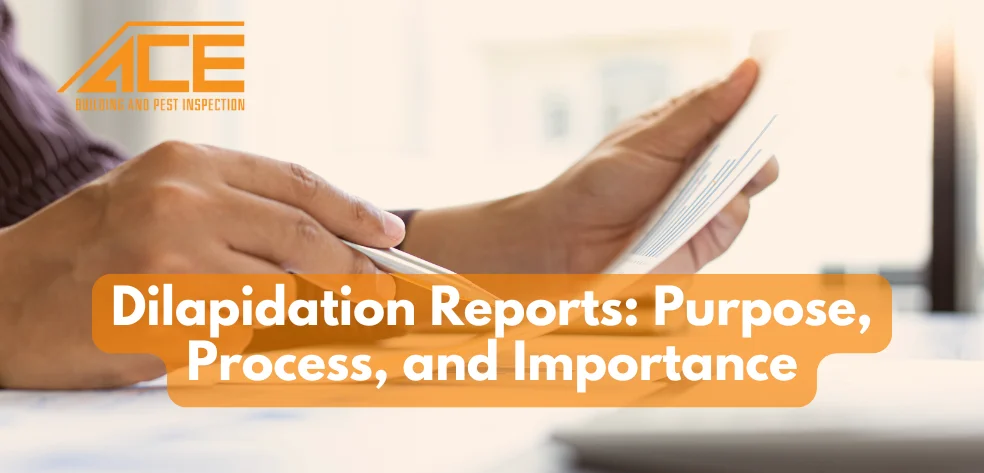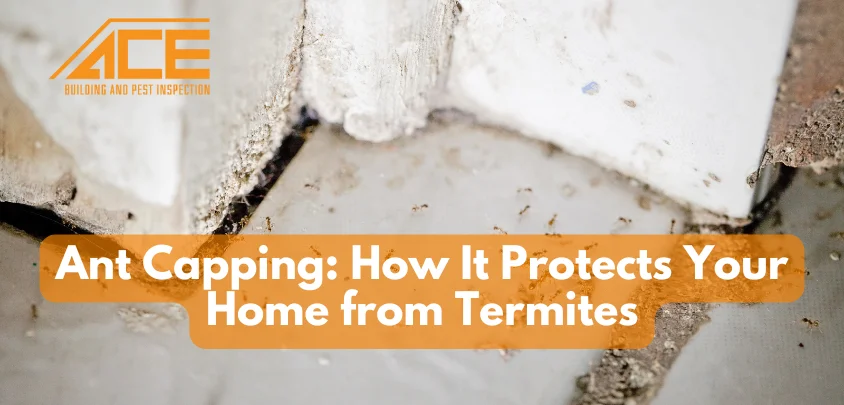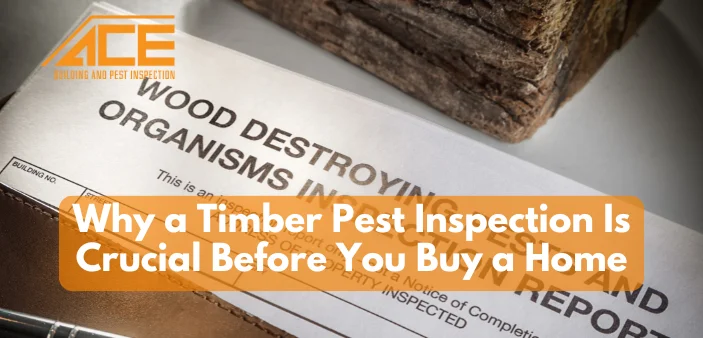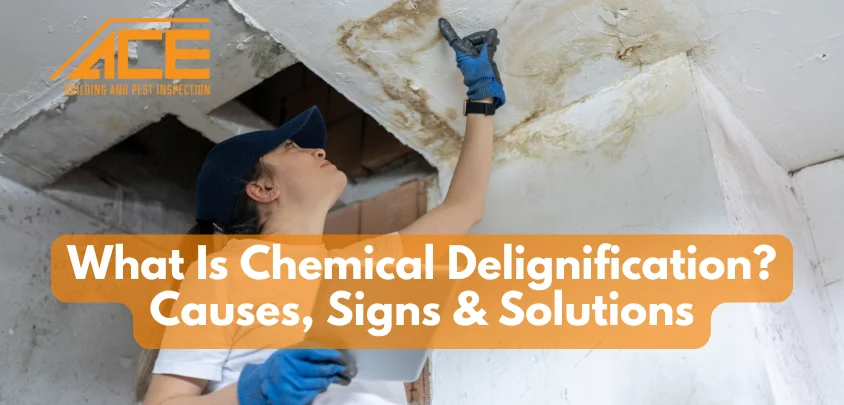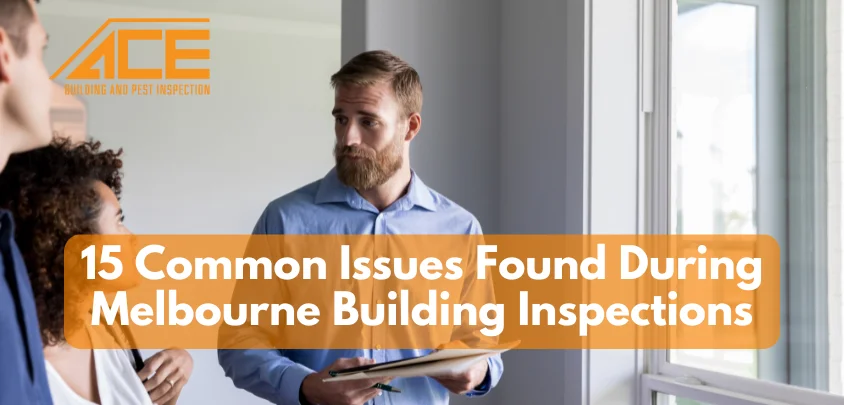Table of Content
A dilapidation report is a crucial document that records the existing condition of a property before nearby construction, excavation, or demolition work begins. Property owners, developers, and contractors rely on these reports to assess potential damages caused by such activities. Conducting a dilapidation inspection helps mitigate disputes and provides a clear reference point if property damage claims arise.
This article delves into the purpose, process, and importance of a dilapidation report while covering essential terms such as Property Condition Assessment, Building Condition Survey, Pre-Construction Survey, Structural Integrity Evaluation, and Condition Monitoring.
What is a Dilapidation Report?
A dilapidation report (or building dilapidation report) is a comprehensive assessment documenting the condition of a building or property at a particular time. This Property Condition Report is often conducted before construction or infrastructure projects begin to ensure that any subsequent structural changes or damages can be traced accurately.
Key Elements of a Dilapidation Report:
Detailed property description
Identifies the location, type, and structure of the property.
Photographic evidence
High-resolution images documenting existing conditions.
Structural analysis
Evaluate cracks, subsidence, water damage, and other visible defects.
Measurements and notes
Details of structural integrity and any potential vulnerabilities.
Video recordings (if applicable)
For a more in-depth view of critical areas.
This report provides a factual basis to protect property owners and construction companies from disputes over damage claims.
A building inspection is often conducted alongside a dilapidation report to assess the overall condition of a structure. A pest inspection may also be included to detect termite or pest-related damage that could compromise the building’s safety.
Purpose of a Dilapidation Report
1. Protecting Property Owners and Developers
A Schedule of Dilapidations safeguards property owners and construction professionals from potential legal disputes by establishing an official pre-construction record. If damages occur, both parties can refer to the report to verify the previous condition of the property.
2. Assessing Structural Integrity
A Structural Integrity Evaluation within the report examines foundational cracks, wall movements, and other stability concerns that may worsen due to external construction activities. This ensures that all relevant parties are aware of any pre-existing issues before construction begins.
3. Legal Compliance and Risk Mitigation
Many councils and regulatory bodies require a Construction Impact Assessment before granting permits for large projects. These reports help meet compliance standards and reduce liability risks for developers and property owners alike.
4. Facilitating Insurance Claims
A well-documented Building Condition Survey can be crucial for insurance claims, as it provides undeniable proof of pre-existing property conditions. Insurance companies often require a detailed assessment to determine whether a claim is valid or if damage resulted from construction work.
Process of Conducting a Dilapidation Report
1. Engaging a Qualified Inspector
A professional building and pest inspection service provider conducts the assessment, ensuring compliance with industry standards. Choosing a qualified and experienced inspector ensures the accuracy and credibility of the report.
2. Conducting a Thorough Inspection
The inspector will examine key structural elements, including:
Walls and ceilings
Checking for existing cracks, damp spots, or instability.
Floors and foundations
Identifying any subsidence or uneven areas.
Roofing and gutters
Assessing structural soundness and potential leakage points.
Windows and doors
Ensuring alignment and checking for signs of shifting.
Adjacent areas
Any structures that could be affected by construction vibrations.
3. Documenting the Property Condition
Photographs and video evidence
Capture pre-existing issues.
Detailed descriptions
Of any visible defects.
Measurements
Provide reference points for potential changes.
Professional recommendations
For monitoring high-risk areas.
4. Preparing the Report
The findings are compiled into a Property Condition Report, which is shared with property owners, contractors, and relevant authorities. This report serves as the official record before any construction work begins.
5. Ongoing Monitoring (if necessary)
For extended projects, Condition Monitoring may be conducted at regular intervals to track any emerging issues. A follow-up assessment can be carried out after construction to compare post-project conditions against the original report.
What If We Find Anything Wrong?
During a Building Defects Analysis, pre-existing issues or potential risks may be identified. If significant structural concerns are found, the following actions should be taken:
1. Immediate Repairs or Reinforcements
- If a property shows severe cracks, subsidence, or water damage, urgent repairs should be carried out before construction begins.
- Reinforcement strategies, such as underpinning foundations or sealing cracks, may be necessary to prevent further deterioration.
2. Consultation with Engineers and Specialists
- Structural engineers should evaluate high-risk properties for potential vulnerabilities.
- A risk assessment can determine whether the proposed construction could lead to additional damage.
3. Notifying Stakeholders
- The property owner, developer, and construction team must be informed about existing issues.
- In some cases, additional permissions may be required before proceeding with work.
4. Updating Insurance and Legal Documentation
- If pre-existing damage is identified, property owners may need to update their insurance policies.
- Legal advisors can help ensure that responsibilities for potential damages are clearly defined before work commences.
If a pest inspection reveals issues such as termite damage, proper pest control measures should be taken immediately to prevent further deterioration.
Importance of a Dilapidation Report
1. Avoiding Legal Disputes
In case of damage claims, a Pre-Construction Survey ensures that both property owners and developers have a neutral, factual record to reference. Without a dilapidation report, it can be difficult to prove whether damages were caused by construction work.
2. Ensuring Construction Accountability
By highlighting pre-existing conditions, contractors can take precautionary measures to minimise potential structural impact. For example, vibration monitoring devices can be installed to track movement during construction.
3. Cost-Effective Risk Management
Investing in a Building Defects Analysis upfront can save thousands of dollars in potential legal and repair costs. It helps avoid costly disputes that could delay construction or lead to compensation claims.
4. Peace of Mind for All Parties
Both property owners and builders can proceed with confidence, knowing that there is a documented reference point for any potential issues. Transparency ensures smooth project execution and fosters trust between stakeholders.
Conclusion
A dilapidation report is a vital document for property owners, builders, and developers. It serves as a Property Condition Assessment, preventing disputes, ensuring legal compliance, and protecting assets. By conducting a thorough dilapidation inspection, stakeholders can confidently proceed with construction projects, knowing that they have an official record safeguarding their interests.
For reliable dilapidation reports in Melbourne, trust ACE Building and Pest Inspection. Our expert team provides comprehensive property assessments, ensuring structural integrity and peace of mind before any construction or renovation project. Whether you’re a homeowner, developer, or contractor, our detailed reports, high-resolution documentation, and expert analysis help protect your investment and prevent costly disputes.
